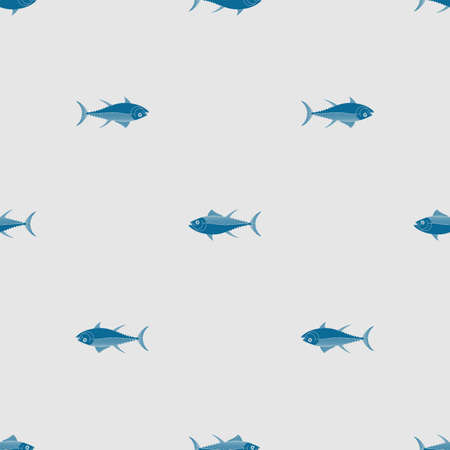1. The Growing Need for Sustainable Gear in the Fishing Community
Fishing is more than just a weekend hobby for many Americans—its a lifestyle, a tradition, and in some cases, even a livelihood. But as the fishing community grows, so does its environmental footprint. One area that’s starting to get more attention is fishing apparel. Traditional fishing clothes are often made from synthetic materials like polyester and nylon, which are petroleum-based and take hundreds of years to break down. When washed, these fabrics can shed microplastics that end up in our lakes, rivers, and oceans, harming marine life and affecting the entire ecosystem.
Why Traditional Fishing Apparel Is a Problem
Most anglers don’t think twice about what their shirts or waders are made from—but maybe we should. Heres a quick look at how conventional gear impacts the environment:
| Material | Environmental Impact |
|---|---|
| Polyester | Made from fossil fuels; sheds microplastics during washing |
| Nylon | Energy-intensive production; not biodegradable |
| Cotton (non-organic) | Heavy pesticide use; high water consumption |
The Shift Toward Eco-Friendly Choices
With growing awareness around sustainability and conservation, modern anglers are beginning to seek out alternatives that align with their love for nature. Eco-friendly fishing apparel is designed to reduce harm by using recycled materials, organic fabrics, and processes that lower water and energy usage. These new choices arent just better for the planet—theyre also high-performing, breathable, and built for long days on the water.
Common Features of Sustainable Fishing Apparel
- Made from recycled plastics or organic cotton
- Dyed using low-impact or natural dyes
- Designed to be long-lasting and durable
- Packed with performance features like UV protection and moisture-wicking technology
Why It Matters Now More Than Ever
Climate change, plastic pollution, and overfishing are putting stress on aquatic ecosystems across the U.S.—from the Florida Keys to the Pacific Northwest. Choosing sustainable apparel is one small but meaningful way anglers can protect the waters they love to fish in. Its no longer just about catching the biggest bass or trout; its about preserving those opportunities for future generations.
The fishing community has always had a deep respect for nature. Now it’s time to show that respect through every part of our gear—including what we wear.
Materials Making a Difference: Eco-Friendly Fabrics and Technologies
Today’s anglers are not just thinking about the next big catch—they’re also thinking about the planet. With growing awareness around environmental conservation, fishing apparel brands are stepping up to offer gear that’s both high-performance and eco-friendly. Let’s take a closer look at the sustainable materials making waves in the world of fishing clothing.
Recycled Polyester: Giving Plastic a Second Life
Recycled polyester is one of the most popular sustainable materials used in modern fishing apparel. Made from recycled plastic bottles, this fabric helps reduce plastic waste while delivering durability, moisture-wicking performance, and UV protection—perfect for long days on the water.
Why Anglers Love It:
- Lightweight & Quick-Drying: Ideal for hot or humid fishing conditions.
- Durable: Holds up against wear and tear from sun, saltwater, and frequent use.
- Environmentally Friendly: Reduces landfill waste and lowers carbon emissions during production.
Organic Cotton: Soft on Skin, Easy on the Earth
Organic cotton is grown without harmful pesticides or synthetic fertilizers, making it safer for farmers, wildlife, and waterways. Its breathable, soft, and perfect for casual fishing shirts or lightweight hoodies.
Key Benefits:
- No Toxic Chemicals: Keeps harmful substances out of ecosystems.
- Softer Feel: More comfortable for all-day wear.
- Supports Sustainable Farming: Encourages healthier soil and biodiversity.
Biodegradable Textiles: The Future of Fishing Gear
Innovative biodegradable fabrics are changing the game. These materials are designed to break down naturally over time, reducing long-term pollution in landfills and oceans. While still emerging in the market, they represent a bold step forward in sustainable fishing apparel.
Examples Include:
| Material | Description | Sustainability Benefit |
|---|---|---|
| Biodegradable Nylon | A special type of nylon designed to decompose faster under specific environmental conditions. | Cuts down on long-term synthetic waste. |
| Tencel™ (Lyocell) | A fiber made from sustainably sourced wood pulp using eco-friendly processes. | Fully compostable and uses less water than cotton. |
| PHA-based Fibers | An innovative bio-polymer that breaks down in marine environments without leaving microplastics behind. | Reduces ocean pollution risk dramatically. |
The Bottom Line on Sustainable Materials
Sustainable fishing apparel isnt just a trend—its a movement toward protecting the waters we love. By choosing clothing made with recycled polyester, organic cotton, or cutting-edge biodegradable fibers, anglers can enjoy comfort and performance while helping keep our environment clean for generations to come.

3. Performance Meets Sustainability: Functionality Without Compromise
Modern anglers know that a long day on the water demands gear that performs under pressure. But performance doesnt have to come at the expense of the planet. Eco-friendly and sustainable fishing apparel now combines top-tier functionality with environmental responsibility—so you can fish smart and stay comfortable while protecting the waters you love.
Why Sustainable Materials Matter
Today’s eco-conscious fishing apparel is made from recycled or responsibly sourced materials like organic cotton, recycled polyester, and bamboo fibers. These fabrics not only reduce waste and pollution but also offer impressive technical features that meet the needs of serious anglers.
Built for Performance in Every Condition
Whether youre casting under the blazing sun or battling ocean spray, sustainable fishing clothing is designed to handle it all. Here’s how these garments stack up in key performance areas:
| Feature | Benefit for Anglers | Sustainable Advantage |
|---|---|---|
| UV Protection (UPF 30+) | Shields your skin from harmful sun exposure during long hours outdoors. | Uses natural or recycled UV-resistant fibers without harmful chemical treatments. |
| Moisture-Wicking | Keeps you dry by pulling sweat away from your skin, even on hot days. | Bamboo and recycled poly fabrics naturally wick moisture while reducing reliance on synthetic blends. |
| Durability | Stands up to wear and tear from saltwater, hooks, and rugged terrain. | Reinforced stitching and quality materials mean longer-lasting gear, reducing landfill waste. |
Real-World Comfort, Real-World Impact
Sustainable fishing clothing isnt just good for the environment—it’s built with angler comfort in mind. Lightweight construction, breathable fabrics, and ergonomic designs ensure you can move freely whether youre fly fishing in a mountain stream or deep-sea trolling off the coast. Plus, many eco-friendly brands focus on ethical labor practices and low-impact dyeing processes, so you can feel good about what you wear both inside and out.
Top Functional Features to Look For:
- Vented panels for added breathability
- Quick-dry technology for changing conditions
- Pockets designed specifically for tackle storage
- Eco-conscious water-repellent coatings
The Bottom Line for Modern Anglers
You don’t have to sacrifice performance to make a responsible choice. With todays sustainable fishing apparel, youre getting the best of both worlds: high-tech gear made with low-impact materials. It’s time to upgrade your angling wardrobe with products that protect both you and the environment.
4. Leading Brands Setting the Green Standard
As sustainable fishing gear gains traction, several American apparel companies are leading the way in eco-friendly innovations tailored for anglers. These brands aren’t just selling clothes — they’re redefining what it means to be a responsible outdoorsman by focusing on recycled materials, ethical manufacturing, and long-lasting performance wear.
Patagonia: The Pioneer of Sustainable Outdoor Wear
Known for its commitment to environmental activism, Patagonia has long been at the forefront of sustainable outdoor clothing. Their fishing line, Patagonia Fly Fishing, uses recycled nylon and polyester in many products and supports Fair Trade Certified™ manufacturing. One standout is the Men’s Swiftcurrent Waders, made with 100% recycled face fabric.
Simms Fishing Products: Balancing Performance and Responsibility
Based in Bozeman, Montana, Simms combines high-performance gear with a growing focus on sustainability. They’ve introduced waders that use recycled materials and are pushing toward more local sourcing and environmentally safe water-repellant coatings. A key product is the Simms G3 Guide Waders, which now includes partially recycled fabrics while maintaining top-tier durability.
Grundéns: Protecting Fishermen and Oceans Alike
Grundéns has traditionally served commercial fishermen but is now making strides in eco-conscious angling wear. With their NetSource collection — jackets and bibs made from discarded fishing nets — Grundéns is turning ocean waste into functional gear. The flagship item here is the Daggerboard Jacket, built tough for offshore conditions yet made from repurposed materials.
AFTCO (American Fishing Tackle Company): Sustainability Meets Style
AFTCO has been a trusted name in American fishing since 1958 and continues to evolve by prioritizing conservation. They’ve launched a full line of clothing using recycled polyester from plastic bottles and support habitat restoration programs. Their popular Reaper Fishing Hoodie, made with Repreve® recycled fibers, blends comfort, warmth, and sustainability.
Comparison Table of Eco-Friendly Features
| Brand | Flagship Product | Sustainable Features |
|---|---|---|
| Patagonia | Swiftcurrent Waders | 100% recycled face fabric, Fair Trade Certified™ sewing |
| Simms | G3 Guide Waders | Partially recycled materials, durable construction for longevity |
| Grundéns | Daggerboard Jacket | Made from upcycled fishing nets (NetSource fabric) |
| AFTCO | Reaper Fishing Hoodie | Recycled polyester (plastic bottles), supports conservation efforts |
The innovation shown by these companies proves that anglers don’t have to choose between performance and planet. With these brands setting the standard, the future of fishing apparel looks greener than ever.
5. How Anglers Can Lead the Conservation Movement
As anglers, every decision we make—right down to the clothes we wear—has an impact on our waters and marine ecosystems. Choosing eco-friendly and sustainable fishing apparel isnt just about looking good on the water; its about making a real difference in preserving the places we love to fish.
Why Clothing Choices Matter
Traditional fishing gear often uses synthetic materials that shed microplastics into waterways, take centuries to decompose, or are made through processes that harm the environment. Sustainable fishing apparel uses recycled materials, organic fabrics, and low-impact dyes to reduce this footprint.
The Power of Individual Action
When one angler chooses sustainable gear, it might not seem like much. But when thousands of anglers make smarter choices, brands take notice—and so does the planet. Here’s how individual clothing choices help protect our waters:
| Eco-Friendly Choice | Environmental Benefit |
|---|---|
| Recycled polyester shirts | Reduces plastic waste and energy use |
| Organic cotton hats | Avoids harmful pesticides and supports healthy soil |
| Bamboo fiber buffs | Sustainable plant-based material with low water usage |
| PFC-free rain gear | Prevents toxic runoff into rivers and oceans |
Anglers as Environmental Advocates
Your actions speak louder than words. By wearing sustainable fishing apparel, you set an example for others on the water. Whether youre casting from a kayak or guiding a group trip, your gear can spark conversations about conservation. Heres how you can amplify your impact:
1. Share Your Story
Post photos and tips on social media using hashtags like #SustainableFishing or #EcoAngler to spread awareness.
2. Support Green Brands
Purchase from companies committed to sustainability and let them know you value their eco-conscious efforts.
3. Educate Fellow Anglers
If someone asks about your gear, take the opportunity to explain why sustainable choices matter for fish habitats and ocean health.
4. Participate in Cleanups & Conservation Events
Your voice carries weight in your local community. Attend events that support marine conservation and encourage others to join.
Sustainable fishing apparel is more than just a trend—its a movement led by people who care deeply about preserving our natural resources. When anglers lead by example, they inspire others to cast their lines with purpose and protect the waters we all rely on.


